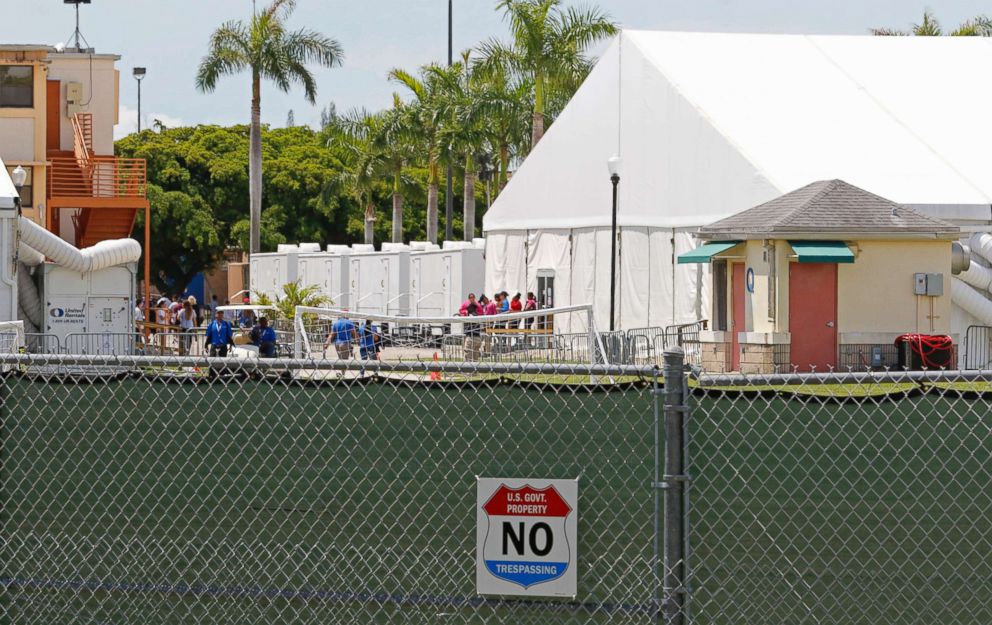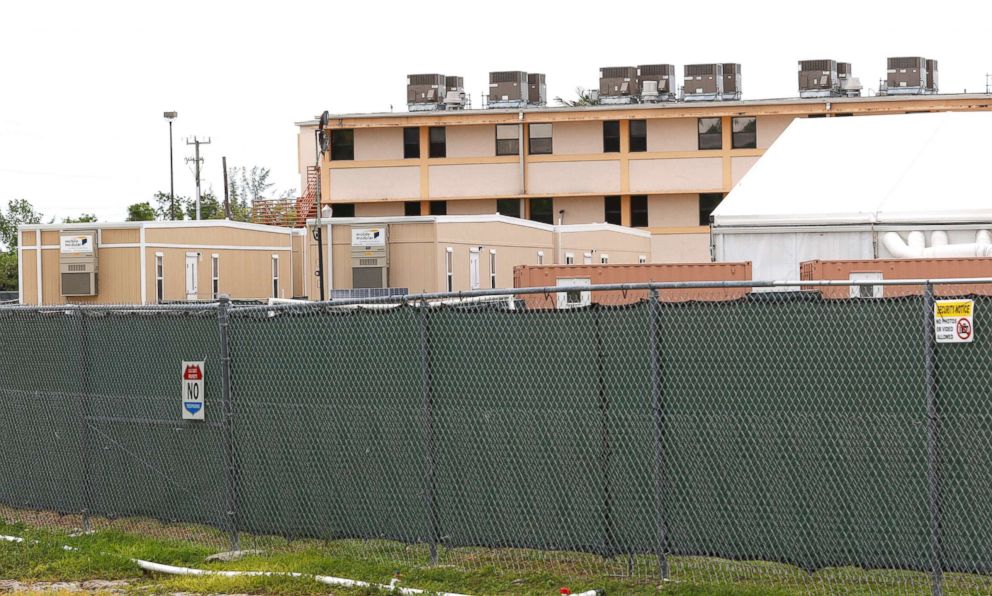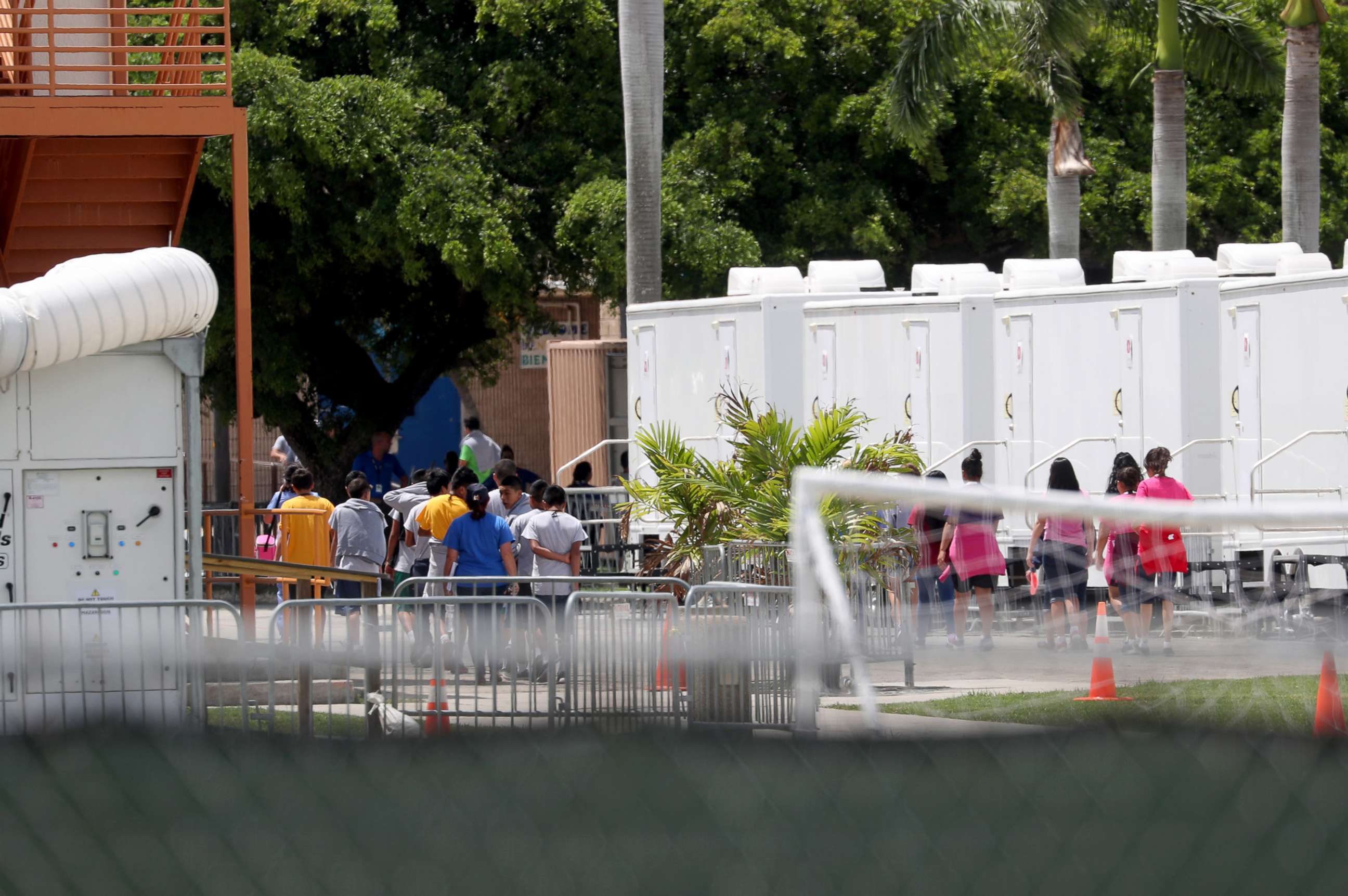Reporter's Notebook: Inside a Florida shelter for immigrant children
There are more than 1,000 immigrant children at the shelter in Florida.
HOMESTEAD, Florida -- Driving into the Homestead Temporary Shelter for Unaccompanied Children on a golf cart, you get the feeling you're arriving at a well regimented school.
There are lines of children walking in single-file from building to building, clad in matching T-shirts and dark blue shorts. Members of the press aren't allowed to talk to the children and cameras and phones are prohibited. Some of the children smile at us and a few say "good morning."
The U.S. Department of Health and Human Services contracts Comprehensive Health Services Inc. to run the shelter in Homestead, Florida. The administrators repeatedly emphasize that it is not a detention facility despite its chain-link fences with unarmed guards and metal detectors at all entrances.

You won't find any chain-link detention enclosures. A welcoming sign states the goal is to reunite the immigrant children with their families in this country.
There are currently 792 boys and 387 girls, ranging in age from 13 to 17, who live at the shelter. About 70 of them were separated from their families as they attempted to cross the border into the United States from Mexico.
Administrators are expecting more children to arrive at the facility, which can house up to 1,350 people. They say the "vast" majority of the teens come from Guatemala, El Salvador and Honduras.

The Department of Health and Human Services says the shelter is an "influx" facility that opens and closes as needed to accommodate larger numbers of unaccompanied children. On average, children remain there for 25 days.
The counselors and lawyers at the facility aim to locate a parent, family member or foster parent in the United States in order to place these children in homes as quickly as possible. HHS says 85 percent of the children will end up going to the home of family or friends in the country.
Each child receives two 10-minute telephone calls per week to call a parent or family member.
HHs says each child is assigned an "A" number during their original processing, which helps to track down their families later in the process.
Staff run the shelter on a strict schedule. The children wake up at 6:30 a.m., and lights out is at 10 p.m.
When a child arrives, their personal possessions are collected and they receive a five-day supply of clothes along with a hygiene kit.
The child will be assigned to live in one of four dormitory buildings reminiscent of college dorms, except there are 12 kids to a room. All of the children sleep in bunk beds and share two sinks, one shower and one toilet in each room.

Their day is very regimented with six-hours of education at the makeshift school inside a large air-conditioned white tent. They take classes in math, science, English to Speakers of Other Languages (ESOL), reading and writing, history, arts and crafts and physical education.
Disney characters as well as educational and inspirational posters line the walls of the hallways of the tent school. A poster featuring U.S. presidents does not include President Donald Trump. It stops after his predecessor, Barack Obama.
The boy and girl students are kept separate throughout the day. They eat at different times and go to class in different parts of the tent school.
There are no video games or daily access to television. The children are rewarded for good behavior with being allowed to watch TV on the weekend, including the World Cup.
"These really are good children," the program director, Leslie Wood, tells me.
The cafeteria where the children eat three times a day is like any public school cafeteria in the country, decorated with inspirational posters. One hand-drawn poster shows North and South America with the saying, "Estamos Unidos."




